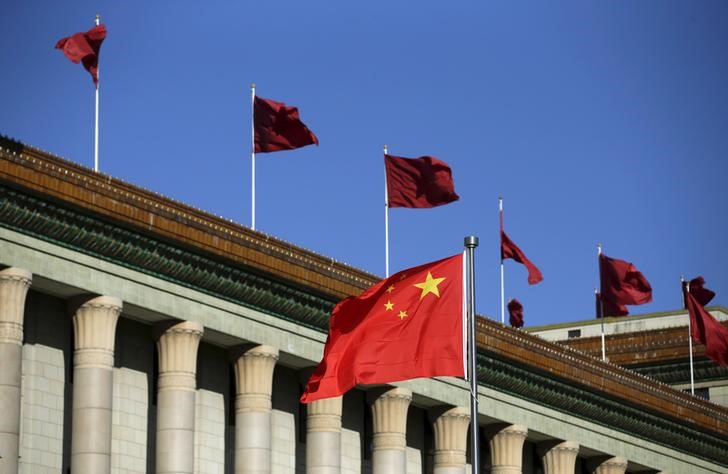* Asia's high yield spreads lure investors
* Fund managers positive on high-yield credit in China
* Indonesian government bonds also popular with investors
* Important to monitor default risk in China
By Stanley White
TOKYO, March 9 (Reuters) - Global investors fleeing a
shakeout in U.S. and other developed market bonds are finding
harbour in the higher yields and relative stability offered by
Asian junk-rated debt.
The rise in long-term yields in major economies to
multi-year highs is reminiscent of the 2013 taper tantrum,
except that India, Indonesia and others in Asia aren't seeing
the selloff in bonds and currencies they did back then.
Now, with the backing of stronger economies, less profligate
governments and healthier current accounts, the region is
becoming a refuge for yield seekers.
Foreign investors have bought a net $41.5 billion of Chinese
bonds since the start of the year, already about a third of what
they did in all of 2020. Inflows into other emerging Asia bond
markets this year are $2.8 billion, or 61% of last year's total.
"Emerging markets Asia is attractive from a relative value
perspective," said JC Sambor, head of emerging markets fixed
income at BNP Paribas Asset Management in London.
"We think there is more value in high yield. We think it is
fundamentally mispriced," he said, referring to the cheapness of
bonds in markets such as China.
The spreads Asian junk bonds offer have been a big
attraction for investors seeking returns that are better than
inflation.
Bank of America's high-yield Asian emerging markets index
.MEREMHA shows spreads are 671 basis points above Treasuries,
versus a spread of 330 basis points for high-yield U.S. credit
.MERH0A0 , effectively an additional payout of more than 300
basis points.
For investors who are more risk averse, government debt from
China CN10YT=RR , Indonesia ID10YT=RR , and India IN10YT=RR
offer spreads from 170 to 500 basis points over Treasuries, so
the carry pick up is "significant," says Joevin Teo, head of
Asian fixed income at Amundi Singapore.
VISITING OR STAYING?
Some asset managers expect these inflows to continue over
the longer term as shell-shocked investors recover from their
losses on Treasuries and euro-denominated debt and see the case
for Asian bonds.
Global emerging market credit totals around $1.4 trillion,
and Asia makes up the lion's share of this market, but investors
are missing out because they rely on benchmarks that understate
Asia's size, says Paul Lukaszewski, head of corporate debt for
Asia-Pacific at Aberdeen Standard Investments in Singapore.
Sambor at BNP Paribas said he prefers Chinese hard currency
corporate debt, which is denominated in dollars, for the added
layer of protection. Other investors wary of currency risk also
say they prefer dollar-denominated bonds.
"Given the levels of yields in places like Germany, it
doesn't make sense to hold them in any decent size if the aim is
to protect against volatility. For this, we have a positive view
on bonds from Korea and China," said Justin Onuekwusi, portfolio
manager at Legal & General Investment Management in London.
Yet, while China offers the biggest pool by far of
high-yield credit in Asia, there are risks around corporate
defaults as the government switches from its pandemic-era
stimulus to more targeted lending.
Aberdeen's Lukaszewski is also positive on Chinese dollar
credit but is cautious about the power generation and industrial
sectors, which he reckons could be adversely affected by plans
to cut carbon emissions.
Mitul Kotecha, chief emerging market Asia and Europe
strategist at TD Securities in Singapore, expects Asian bond
markets will face periods of net outflows as some investors book
profits on an increasingly crowded trade. But the long-term
fundamentals look solid, he said.
<^^^^^^^^^^^^^^^^^^^^^^^^^^^^^^^^^^^^^^^^^^^^^^^^^^^^^^^^^^^
High Yield Versus Investment Grade https://tmsnrt.rs/2OuRVGH
Emerging Asia Real Bond Yields https://tmsnrt.rs/3uX8Ulw
Gross Debt Ratios https://tmsnrt.rs/3rsve4v
^^^^^^^^^^^^^^^^^^^^^^^^^^^^^^^^^^^^^^^^^^^^^^^^^^^^^^^^^^^>
